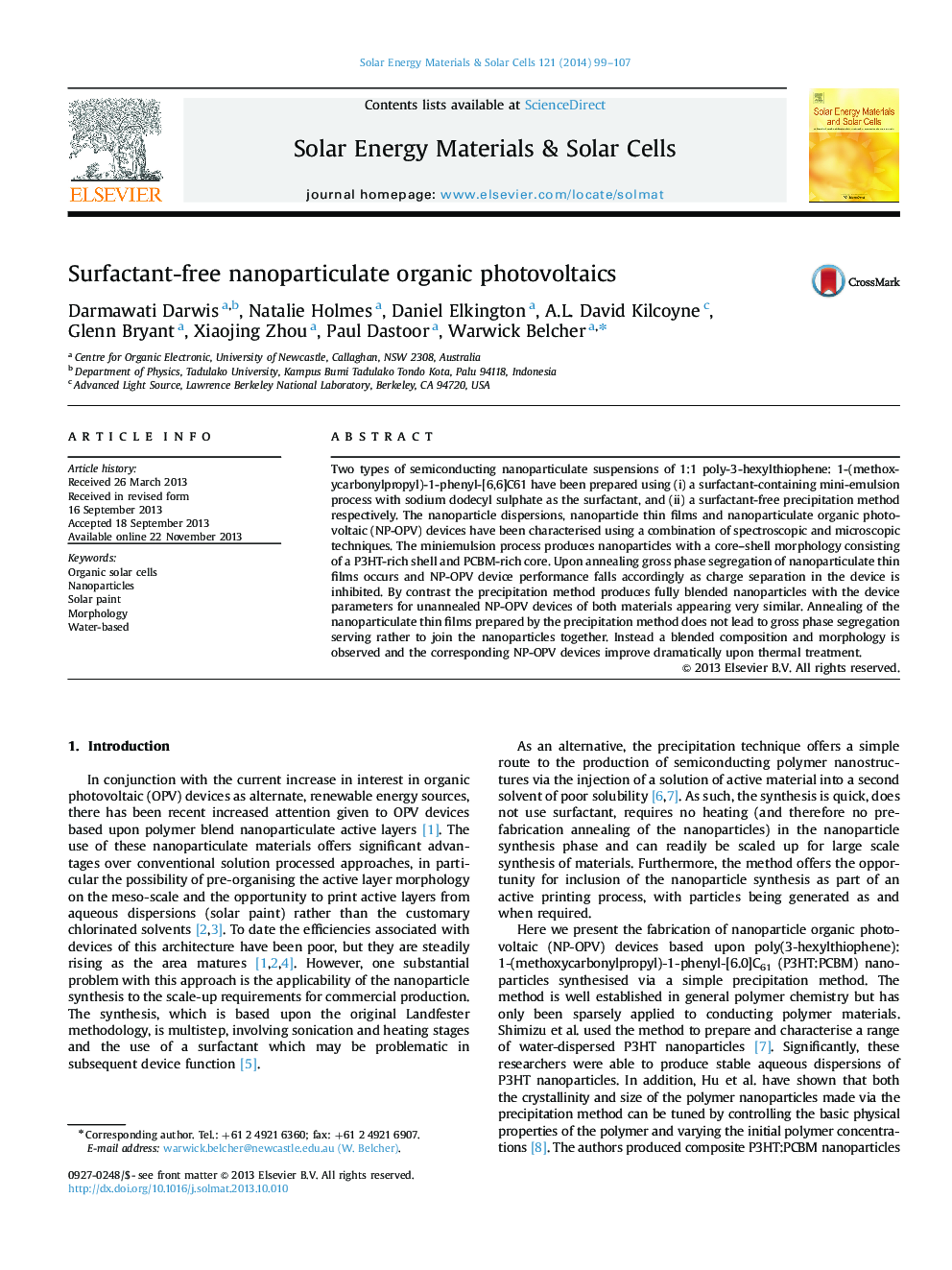| Article ID | Journal | Published Year | Pages | File Type |
|---|---|---|---|---|
| 78211 | Solar Energy Materials and Solar Cells | 2014 | 9 Pages |
•P3HT:PCBM nanoparticles (NPs) are prepared both with and without surfactant.•Preparing NPs without surfactant may be better suited to large-scale preparation.•Surfactant containing NPs are core–shell, whereas surfactant-free are blended.•The two sets of particles respond to annealing differently.•Surfactant-free nanoparticle photovoltaic devices have better efficiencies.
Two types of semiconducting nanoparticulate suspensions of 1:1 poly-3-hexylthiophene: 1-(methoxycarbonylpropyl)-1-phenyl-[6,6]C61 have been prepared using (i) a surfactant-containing mini-emulsion process with sodium dodecyl sulphate as the surfactant, and (ii) a surfactant-free precipitation method respectively. The nanoparticle dispersions, nanoparticle thin films and nanoparticulate organic photovoltaic (NP-OPV) devices have been characterised using a combination of spectroscopic and microscopic techniques. The miniemulsion process produces nanoparticles with a core–shell morphology consisting of a P3HT-rich shell and PCBM-rich core. Upon annealing gross phase segregation of nanoparticulate thin films occurs and NP-OPV device performance falls accordingly as charge separation in the device is inhibited. By contrast the precipitation method produces fully blended nanoparticles with the device parameters for unannealed NP-OPV devices of both materials appearing very similar. Annealing of the nanoparticulate thin films prepared by the precipitation method does not lead to gross phase segregation serving rather to join the nanoparticles together. Instead a blended composition and morphology is observed and the corresponding NP-OPV devices improve dramatically upon thermal treatment.
Graphical abstractFigure optionsDownload full-size imageDownload as PowerPoint slide
